Today’s review is on one of my recently purchased brands called Vital Essentials. I didn’t know they existed until 2017. They started up in 1968. Unfortunately, this brand is harder to find in some areas. Although you may have heard of them if you happen to live in or around Wisconsin. I was happily surprised at the number of good products in their line.
They also provide food for wild cats at the Milwaukee Zoo.
About the Brand
Vital Essentials is a family-owned company. They manufacture all of their products in a USDA & FDA inspected facility in Green Bay. They use only human grade meats & supplements. Presently, there is no way for pet owners to know for sure what grade of meat is in their pet’s food. You have to trust that whatever the pet food company says is true.
This is important to me because I don’t want to feed my cats an uncooked product that isn’t high quality, clean meat.
Vital Essentials uses only muscle meat, organs and bone. They have fewer supplements on the ingredient list than other brands. No rendered by-products are ever used, guaranteed. Unlike with cheaper brands, where we don’t actually know what quality of meat they are using.
They also guarantee that no foreign ingredients are used.
The Alpha Prey Model Diet
They refer to their food as The Alpha Prey Model Diet. This diet mimics what a wild carnivore eats in nature: muscles, organs, and bone. In addition. their products don’t contain grains or starches.
Also, the word alpha is included because in a wolf pack, the ‘alpha’ typically eats first and gets the majority of the organs, which are a great source of important nutrients.
That does not apply to domestic cats so much, as they prefer to be loners but I find they do enjoy raw chicken hearts as treats.
A domestic-sized cat in the wild eats prey like mice whole, so they ingest organ meats in addition to the rest of the mouse. When my cat eats (pre-killed) mice, she bites off the head and swallows that first. After that, she will eat the body.
They offer two lines of single protein frozen raw diets available, one labeled for cats and one labeled for dogs. They make both frozen raw and freeze-dried raw versions.
Watch Out for Dairy!
There is one main IMPORTANT difference between the two lines of frozen raw. The cat line contains raw goat’s milk, which is dairy, and that makes the company’s “no junk” claim false.
I emailed them and asked why they included dairy, and their response was simply 2 reasons: texture and “nutrients”.
Texture is an important factor for cats, because many have strong texture preferences. Cats are known to be extremely picky eaters.
The texture of the thawed Vital Essentials raw is pretty much the same, whether it is the one labeled for cats or the one labeled for dogs. I tried both lines on my cats.
Also, I feed them Allprovide & Rad Cat, and neither contain dairy, but they both have a nice texture that my two cats like.
I mean, when you grind up meat, organs and bones together, how many different textures can you make out of that?
With any raw food there will be some liquid/blood (once it has thawed) and depending on how finely ground it is there will be some chunkiness to it.
All flavors of Vital Cat contain added water anyway. All flavors except rabbit contain eggs, which can be a potential allergen if your cat has poultry allergies.
Do They Really Need Dairy?
As far as nutrients go, goat milk ONLY contains the nutrients that are necessary for the survival and growth of a baby goat (the proper term is kid), nothing more; nothing less.
More importantly, any form of dairy is contraindicated for anybody (animal or human) who is prescribed tetracycline antibiotics.
This is because the dairy (milk, whey, butter, cream, yogurt, frozen yogurt, cheese, sour cream, etc.) prevents the medication from being absorbed correctly so it won’t work. Therefore it should be avoided, at least until you are finished taking the antibiotics.
The tetracycline class of antibiotics includes doxycycline, which is commonly prescribed to cats for herpes flare-ups and upper respiratory infections (URI). It is one of the best two antibiotics for URIs, the other best one is Clavamox.
Doxycycline is the antibiotic that is used to treat Lyme disease. It is also used for dogs that are being treated for heartworms, because that worm carries a bacterium called Wolbachia that is released into the bloodstream when the worms die off. Hence the need for antibiotics.
Pets Can Be Lactose Intolerant, Too
Firstly, never forget that most cats & dogs are lactose-intolerant. If your pet is, you will see them have vomiting and/or diarrhea after ingesting dairy.
Mother’s milk is intended for the survival of babies of the same species as the mother, who have tiny baby guts. Adults don’t need it.
In college, the veterinarian teaching one of my classes said that vomiting & diarrhea are the #1 reason pets are brought into the vet clinic and the main cause is dietary indiscretion.
There are dry foods that contain dairy too, but those will be covered in a separate post.
For the frozen raw, there are several flavors and package sizes available.
Product Options for Cats
Chubs (8 ounces) in chicken, turkey, duck, and rabbit
Mini patties (2 pound pack) in chicken, turkey, duck, and rabbit
Family size (3.5 pound pack) in chicken, turkey, duck, and rabbit
Product Options for Dogs
Nibblets (3 pound bag) in beef, chicken, and turkey
Mini patties (2 ounces each- 3 pound bag) in beef and chicken
Patties (6 pound bag) in beef, chicken, turkey, duck, rabbit, fish, and wild boar
Chubs (5 pounds) in beef, chicken, turkey, and duck
Either line can be fed to cats or dogs. Luckily, all formulas are nutritionally complete for all life stages.
I approve of the ingredients overall except for the dairy. Otherwise, all formulas are very species-appropriate for felines.
Disclaimer: my cats are really addicted to Rad Cat, and it is difficult to test new raw foods on them. Your cat may love a food that my cats don’t.
First I tried the frozen raw nibblets in chicken & beef, because that was the only kind I found in a store. The nibblets are like little pillows, so cute! That is the only way I can describe them.
They did not like these that much, but ate them mixed with canned pate. Surprisingly, they did not like the beef. They ate the beef Nature’s Variety Instinct and beef canned foods, so I expected them to like it.
Tripe is A Tasty Delicacy
Take a look at the beef ingredient list, and you’ll see they include beef tripe. Usually beef-flavored cat foods don’t also contain tripe. Cats who normally like beef may not like tripe.
Tripe is basically cow stomach lining. It’s not just for pets; many people all over the world enjoy this delicacy.
Next we tried the Vital Cat frozen raw chubs. I bought turkey, rabbit & duck. They liked the rabbit the most and did not like the turkey or duck.
I also bought a bag of the chicken patties. My cats ate the chicken nibblets when I mixed them with canned food so I’m going to try that again because the Vital Essentials in that size is cheaper than the Rad Cat. We’ll see how it goes.
The patties in the dog line are similar in size to the Nature’s Variety Instinct patties, just not quite as thick.
One reason I recommend this brand is because they have a huge variety of treats that are appropriate for both cats and dogs. Also, they are fine for those who need to stay on a limited ingredient/single protein diet too.
My cats are weird and won’t eat the freeze-dried treats at all…..maybe because they’ve been on a moist diet most of their lives so they don’t recognize dry treats as edible? Or maybe freeze-dried is just not their favorite texture.
Most common brands of treats, like Temptations, are purely junk. Don’t feed those, please (but I know some of you will anyway).
A Better Type of Cat Treat
The Vital Essentials treats & food toppers are freeze-dried. Freeze drying retains nutrients and allows food to have a longer shelf life. Something I really appreciate is that the freeze-dried products don’t have much if any smell to them.
A unique product for cats is their freeze-dried minnow treats. Pet owners on social media say their cats love the minnows. I won’t buy these because we are a fish-free household. Although fish sure is pungent, and cats have such a strong sense of smell so they are enticing.
All of the fish treats (minnows, wild Alaskan salmon, & ahi tuna) are obviously contraindicated for cats with fish allergies.
Other treat flavors available for cats are: chicken breast, chicken giblets, chicken hearts, duck liver & rabbit bites.
Tip: if your cat won’t eat the dry treat, try soaking it in water to soften it. If they won’t eat it on its own soft, try mixing it with wet or raw food.
Try Some of These Fun Toppers
FYI, a new treat labeled for dogs that they released not too long ago is called turkey ‘fries’. However, they are not referring to turkey-flavored french fries. Nope. That means testicles. Turkey testicles. Unbelievably, people eat them too, often deep fried. There is even a festival dedicated to them. Not sure that I would give those to a cat, though they would probably eat it. On the other hand, maybe they are fine for cats to eat? Honestly I don’t know.
Vital Essentials makes another unique type of product called food toppers. These are essentially a powdered version of their freeze-dried foods. Toppers come in 4 flavors: beef, chicken, turkey & fish.
You can add toppers to any kind of food (dry, raw or canned). This achieves the same effect as buying freeze dried meat treats and crushing them yourself. Adding a topper to your cat’s food can help if you’re in the process of transitioning to a new food.
I saw these at Bentley’s Pet Stuff and grabbed a bag to take a closer look at the package. It looks completely powdered but I felt a whole uncrushed mini patty inside.
Cost and Availability
This brand is only available at select stores; unfortunately you will NOT find them in a big box pet store, grocery store, or Target.
Many stores say that they carry Vital Essentials but actually just have the treats or freeze-dried products. The frozen raw is hard to find in some places. I found it at Bentley’s Pet Stuff, online at Chuck & Don’s Delivers or Total Dog Company. Use the store locator on their website to find sellers near you.
*Note that I wrote this review a few years ago, so pricing here is not current.
Of course the cost varies by where you buy it from, but I paid $2.99 for the 8 ounce Vital Cat chubs. The Rabbit chub was $4.99.
The 6 pound bags of the patties range depending on flavor. I paid $33.99 for the chicken patties.
The most expensive flavors are the beef and wild boar. Those are $45-ish and the duck is $38. That is not too bad- it is similar to the Nature’s Variety Instinct patties for dogs.
Do I recommend this product? Yes to everything but the Vital Cat, because it contains dairy. Double yes to the treats & toppers.
In Summary
In conclusion, this brand is good overall. However, there are pros and cons.
Pros:
- High quality products
- Made in USA
- USDA & FDA inspected
- Single Protein formulas
- Lots of freeze-dried treat options
- Zero fillers, starches, carbs, gluten, or grains, or plants
Cons:
- Cat foods contain dairy, which is contraindicated for cats taking tetracycline antibiotics (sorry, herpes kids)
- Cat chubs are small
- Expensive per pound compared to homemade raw
- Frozen raw is hard to find (depending on what state you live in)
Check out these other raw food reviews too.
Do you feed Vital Essentials to your pet? Leave a comment and let us know!
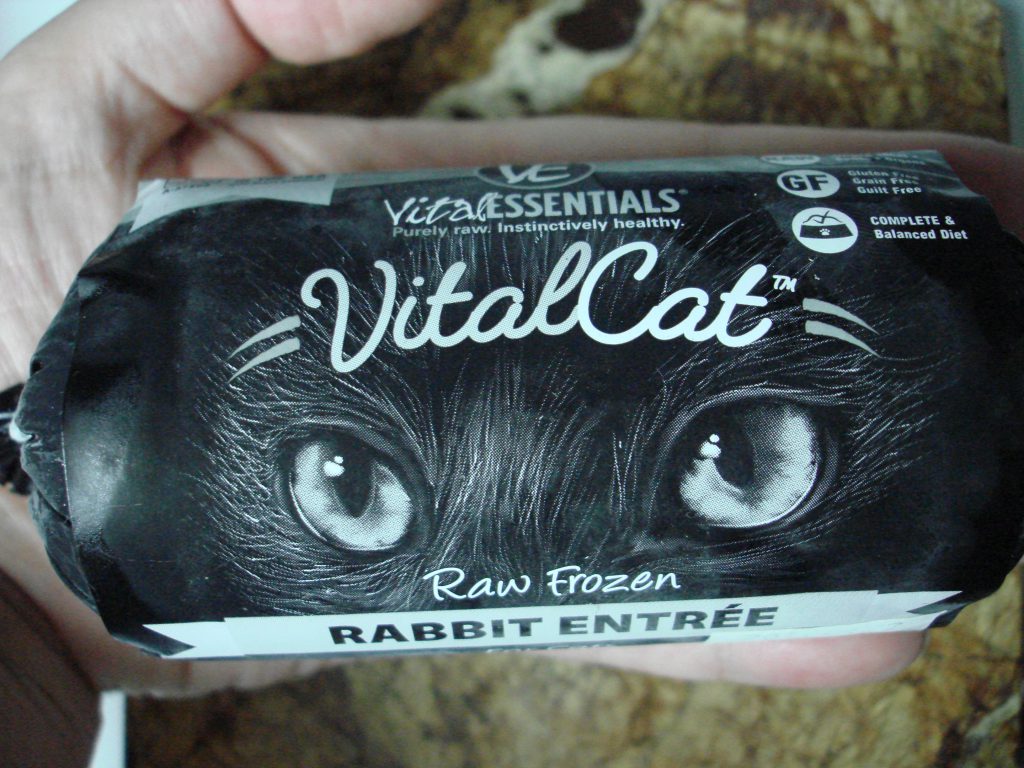
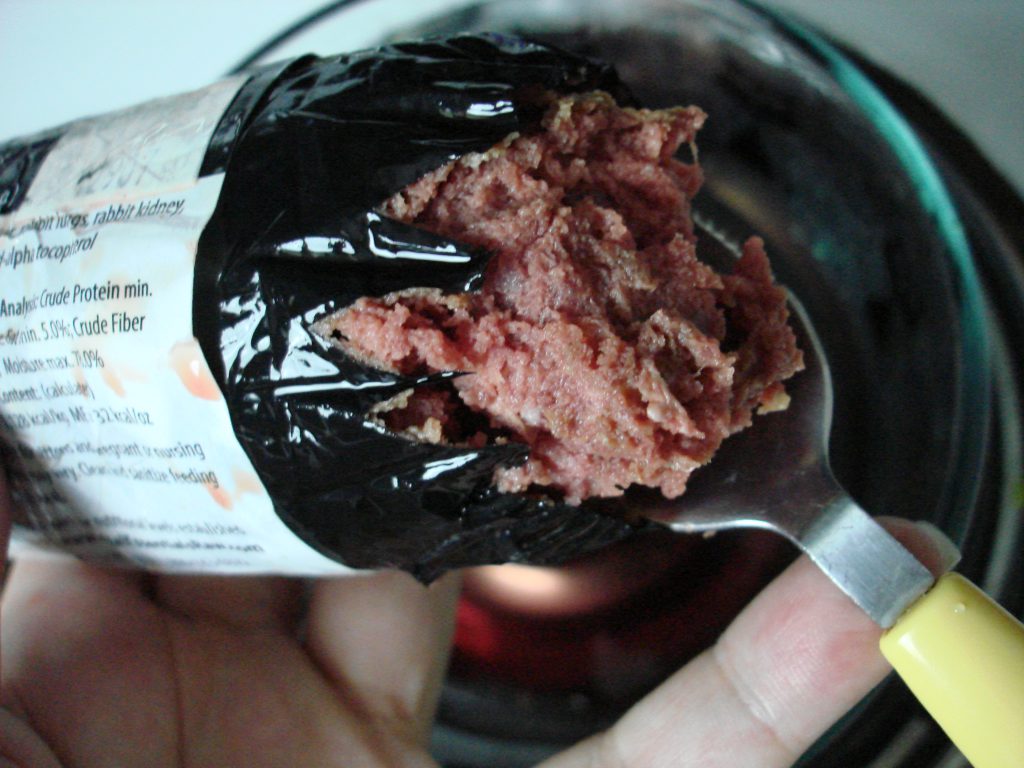

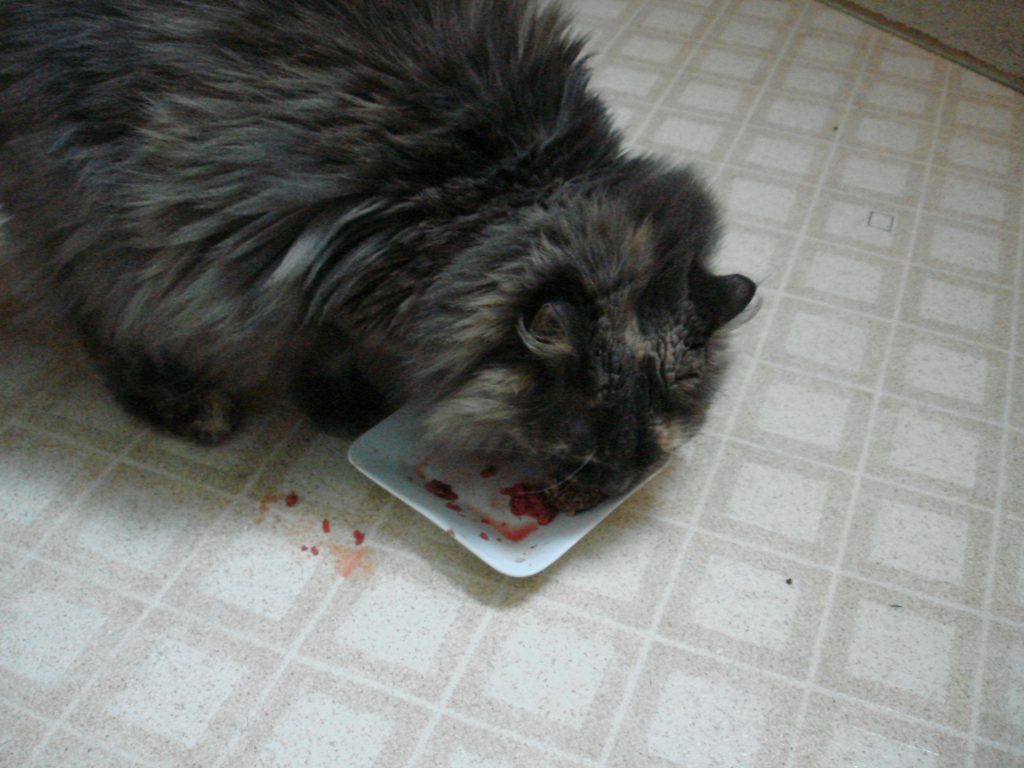
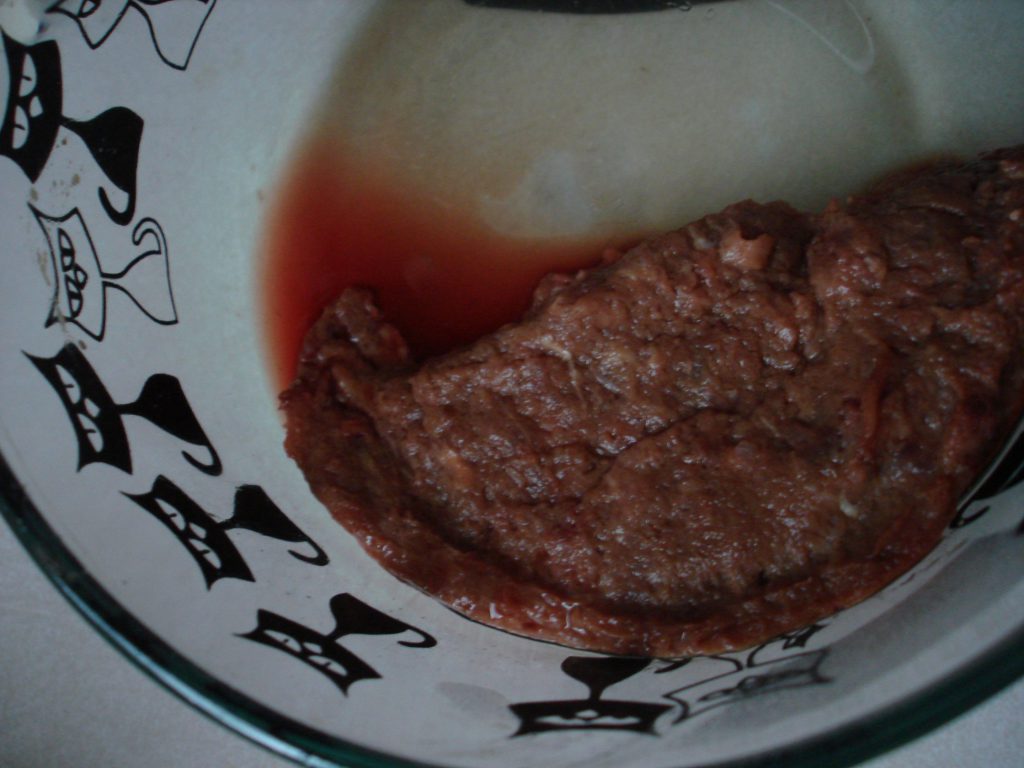
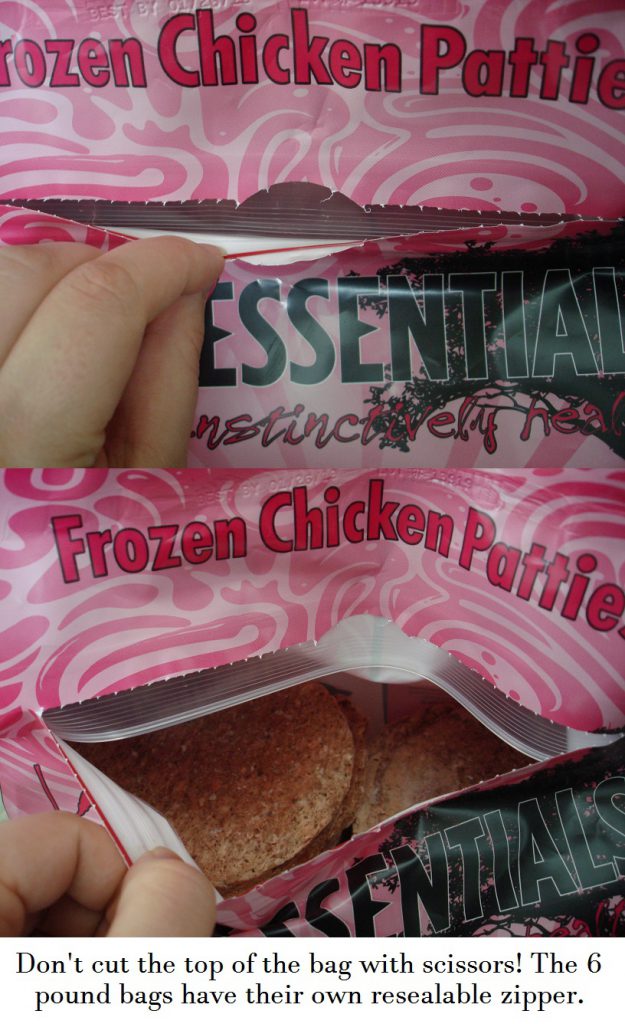
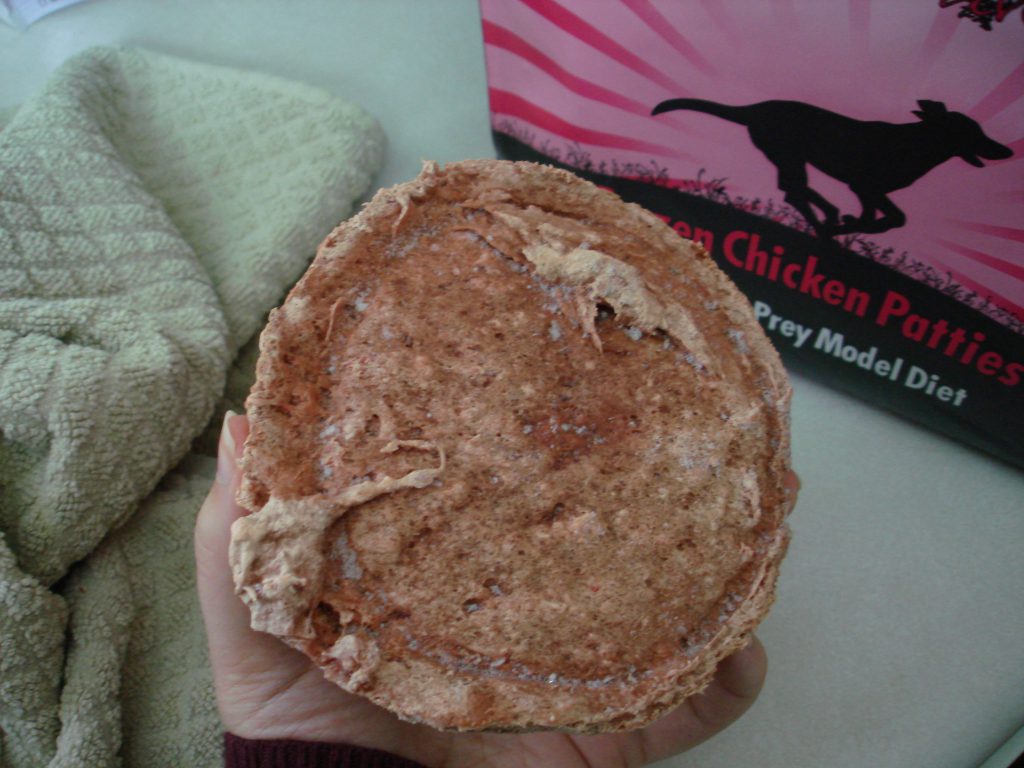

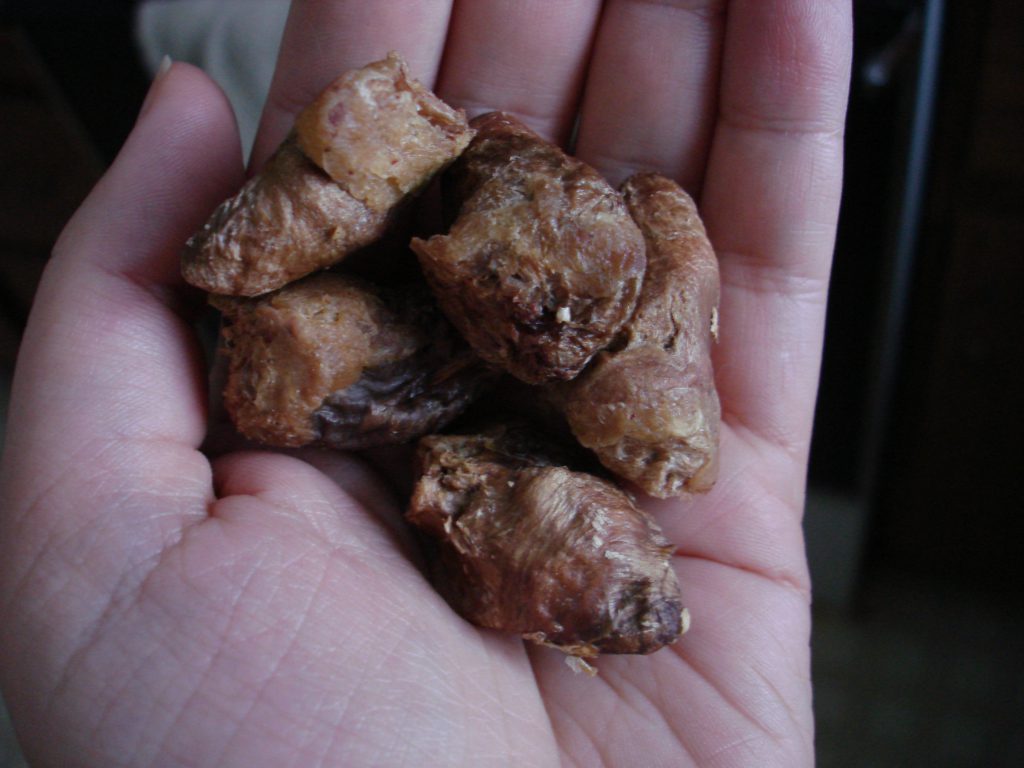
I have 3 cats that are currently eating a combination of wet and dry cat food.I would like to start feeding them a raw food diet.What is the best way to make the transition from their current diet to the raw one.Should I mix the raw
food with wet and gradually decrease the percentages? Also how many days is the frozen raw food you just reviewed good for after it is thawed?
Hi Lisa!
The key to transitioning to raw is patience. That being said, raw and dry kibble are not compatible. Some cats can handle both, but many will vomit or have diarrhea with both types of diets in their system. Also, cats can prefer or be addicted to dry foods.
You should eliminate dry food completely, but if your cats won’t eat the wet or raw foods you’ll have to add it back in so they don’t get sick (hepatic lipidosis).
Either homemade or store bought raw will work. Try many different brands and protein sources. You can mix it with the canned if you want, but to start with I would put out a tablespoon of thawed raw by itself for each cat just to see if they will even eat it.
Thaw enough to last 2-3 days maximum at a time, storing it in the refrigerator. I find that some cats do well on all raw but for those who do canned too I like a 50:50 ratio of each at the minimum, or 25% canned 75% raw.
It will take some experimenting before you find out what foods your cats like best and what amount you will go through in 2-3 days. Good luck!
WOW your site has a lot of helpful information. The reviews are very helpful if you are looking to change your cats food or even if you are looking to get your first cat and trying to decide what food you want to get. I learned a lot reading this post. I had no idea that cats had a texture preference!
Thanks for stopping by!
Yes, cats are weird and they can have a lot of preferences: texture, smell, taste, temperature, etc.
I was feeding my four cats. Acana dry mixed with wet added a bit of brutal filtered water. Warmed it a bit in microwave. However since acana has moved to Kentucky they are leaving more of the dry in their dishes and two of my cats are loosing weight. Not a lot but enough. My vet wants me to increase the food. I was feedback g them twice a day previously they were all maintains around 81/2 to 10 lbs. all healthy. I just bout vital cat freeze dried chicken today wax second day mixed with a bit of warm water and tsp of wet mixed in with less of dry. They are every morsel of the vital Now I’m not sure if I picked the right brand. Should I do stela’s instead? Cats are soo confusing at times when you are trying to do the right thing!
Yes, cats can be confusing! There can be a lot of different causes for weight loss, so it may or not be the food. I’ve looked at the ingredient lists for the Stella & Chewy’s raw frozen for cats. I have not done a review on that brand yet. You can try it. It is probably a lot better than most of the common brands of wet and dry food on the market for cats.